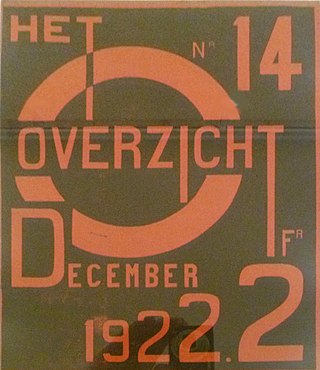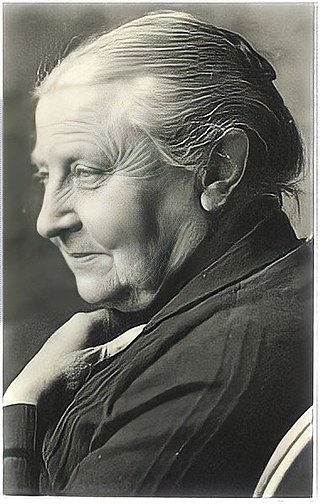Related Research Articles
The Dutch language in its modern form does not have grammatical cases, and nouns only have singular and plural forms. Many remnants of former case declensions remain in the Dutch language, but few of them are productive. One exception is the genitive case, which is still productive to a certain extent. Although in the spoken language the case system was probably in a state of collapse as early as the 16th century, cases were still prescribed in the written standard up to 1946/1947. This article describes the system in use until then. For a full description of modern Dutch grammar, see Dutch grammar. See also History of Dutch orthography.
Gilbert Declercq is a Belgian freelance painter, illustrator, and comics artist.
The following is a list of winners of the Golden Calf for best actor/actress at the Nederlands Film Festival. From 2021 onwards the award became a gender-neutral award.

Wilhelmina Drucker was a Dutch politician and writer. One of the first Dutch feminists, she was also known under her pseudonyms Gipsy, Gitano, and E. Prezcier.

Wim Hora Adema was a Dutch author of children's literature and a feminist, notable for being the co-founder of Opzij, founded in 1972 as a radical feminist monthly magazine. She was one of the best-known women of the Dutch second wave of feminism.

Clara Gertrud Wichmann was a German–Dutch lawyer and anarchist feminist activist, who became a leading advocate of criminal justice reform and prison abolition in the Netherlands.
Michel Ostyn was a Belgian physiologist, sports physician and sports medicine pioneer.
Margriet is a Dutch weekly magazine for women of all ages, which publishes articles on fashion, beauty, health, nutrition, relationships, and society. Formerly published by Verenigde Nederlandse Uitgeverijen, it is owned and published by Sanoma after the latter took over VNU's magazine division.
Beatrijs: Katholiek weekblad voor de vrouw was a Dutch Catholic weekly magazine for women. Founded in 1939, it was taken over by Libelle in 1967.
Femmes d'Aujourd'hui is a weekly women's magazine published in Mechelen, Belgium. Founded in 1933, it is one of the oldest magazines in the country and the first Belgian women's magazine.

Libelle is a Flemish weekly lifestyle and women's magazine based in Mechelen, Belgium. The magazine is the spin-off the magazine with the same name, Libelle, published in the Netherlands.

Libelle is a weekly women's magazine published in Amsterdam, Netherlands. It has been in circulation since 1934.

Het Overzicht was a Dutch language literary magazine published in Antwerp, Belgium, between 1921 and 1925. Until its cessation in 1925 it was the major avant-garde magazine in the country and published a total of 24 issues.

Marie-Elisabeth Belpaire was a Belgian writer and activist. She was known as the "mother of the Flemish Movement".

Emilie Maria Claeys was a Belgian feminist and socialist.

Maaike Meijer is a Dutch literary scholar. She is a Professor emeritus of Maastricht University.
Paula Marckx was a Belgian life model, journalist and pilot. She was also the plaintiff in Marckx v Belgium. In that landmark case, Belgium was convicted in 1979 of unequal treatment of extra-marital children in the law of ancestry and inheritance by the European Court of Human Rights.

Joepie was a weekly youth and music magazine published in Belgium. The magazine appeared between 1973 and 2015.

Monika Triest is a Belgian academic, writer, and civil rights activist. After earning a degree in classical philology at Ghent University, she moved to Canada to teach at the University of New Brunswick in 1965. Three years later when she moved to Yellow Springs, Ohio to teach at Antioch College, Triest became involved in the civil rights and women's liberation movements in the United States. She participated in demonstrations against the Vietnam War and in favor of Roe v. Wade. While she was earning her PhD at the University of Cincinnati, she and Sylvia Tucker offered one of the first women's study courses at the university in 1971. After earning her PhD in 1976, Triest returned to Belgium and in 1985 became the first chair of the women's studies program at the University of Amsterdam, and first women's studies professor in the Netherlands. She continued to teach at various educational facilities until her retirement in 2008.
References
- ↑ "Archive. Het rijk der vrouw". Libelle (in Dutch). Archived from the original on 15 May 2013.
- 1 2 Martina Temmerman; Maaike Van de Voorde (2015). "Absent husbands and whispering voices: a critical analysis of the representation of men in two popular Flemish women's magazines". Journal of Gender Studies . 24 (1): 3–17. doi:10.1080/09589236.2013.790799. S2CID 144333778.
- 1 2 3 4 5 6 7 8 Clarissa Colangelo (2023). The Belgian Photonovel, 1954-1985: An Introduction. Leuven: Leuven University Press. pp. 70–72, 79. ISBN 978-94-6166-511-9. JSTOR j.ctv34wmmc0.
- ↑ Pierre Musso; Philippe Souêtre; Lionel Levasseur (1995). The Printed Press and Television in the Regions of Europe. The Netherlands: Council of Europe. p. 127. ISBN 978-92-871-2807-2.
- ↑ Mieke Ceulemans; Guido Fauconnier (2015). "Mass Media: The Image, Role, and Social Conditions of Women". International Women Online Journal of Distance Education. 4 (2).
- 1 2 Maaike Van de Voorde; Martina Temmerman (2014). "Feminism and Women's Magazines". In Rosario Lacalle Zalduendo (ed.). II International Conference Gender and Communication. Editorial Dykinson, S.L. p. 37. ISBN 978-84-9085-029-9.
- ↑ Maaike Van de Voorde (December 2014). "'Super creams for young eyes': Women's magazines' hybrid approach to journalism". Hybridity and the News Hybrid Forms of Journalism in the 21st Century: 222–242.
- ↑ Katia Segers; Joke Bauwens; Nele Van Den Cruyce (2009). "Reflections of a Child. Depicting Healthy Childhood in the 1940s and 1960s". Revue Belge de Philologie et d'Histoire. 87 (3–4): 759–774. doi:10.3406/rbph.2009.7703.